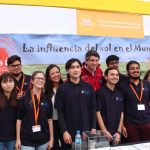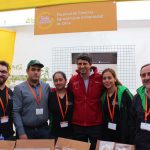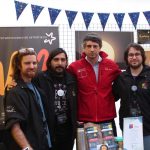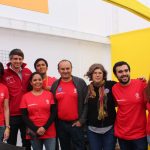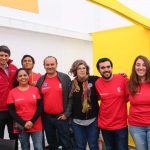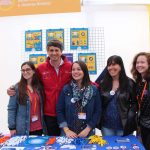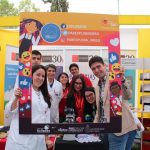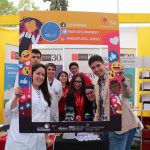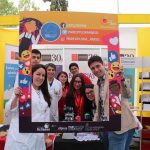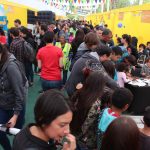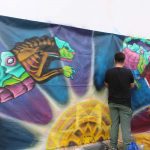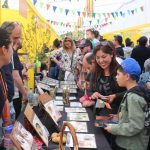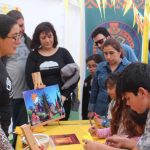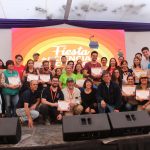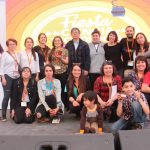More than 14,000 people lived the XIII Festival of Science and Technology
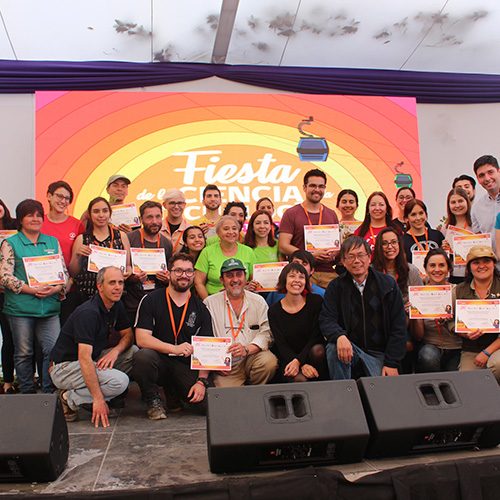
Young, girls, children and the whole family attended a big celebration that in two days brought together the scientific community, researcher and science communicators.
The event, framed in the Explora Week 2019, was held between Saturday 12 and Sunday 13 October, Santiago Metropolitan Park and was attended by dozens of institutions linked to science, technology, innovation and the environment, among other topics. Each of them carried out various activities that captivated thousands of people of different ages.
Carola Gutíerrez, Director of PAR Explore RM South East, pointed out to be very happy with this activity. "We have seen how the feast of science has become a family event that links science with citizenship. We managed to bring together in the same space around 40 institutions that delivered their contents in an enjoyable way to people, bringing science closer to the daily lives of thousands of visitors". On the other hand, Mario Chiong, DIRECTOR of PAR Explore RM North, who for the first time participated in the organization of the Festival of Science, noted that the most striking of both days was "the number of people who came, especially families with girls and boys and the enthusiasm of the participants in stands to show the activities".
The opening of the party, was headed by the science minister, technology, knowledge and innovation, Andrés Couve, who visited most of the party spaces, interacting with exhibitors and the public. "We care about bringing science everywhere and linking it to culture, with art, with outdoor activities involving the whole family. For this reason, activities like these are wonderful", highlighted.
After the inaugural cremony, the minister was interviewed by Karla and Pedro, basic education students at Puelmapu College in Peñalolén, who asked him about the new ministry and the characters he admires most in the world of science. Students also interviewed Ennio Vivaldi, rector of the University of Chile and other leading scientists throughout the festival.
The public's curiosity
Attendees were very interested in the different interactive spaces, framed in the concepts that this year were pillars of the party: "The Sun", "climate change" and "social appropriation of science and technology". In addition to the stands there were workshops, music show, art-science, Contests, different games for all ages and tour activities.
"I find it spectacular what they're doing. I came with my niece and my sister-in-law and we toured all the stands. I liked everything because nothing is repeated, it's an activity to come with the family", said visitor Maria Elena Balboa.
"The boys have been very entertaining, has aroused more curiosity. I had no idea they were so curious until I saw them here asking a lot, so it's been fantastic", Hugo Poblete told, who attended with their children.
Spreading science
The feast of science is not just a space for the quarrelto to approach science, it is also the perfect meeting for scientists to show their work, get out of your routine to share with your peers and interact with boys and girls.
Dr. Fernando Fredes, Vice-Dean FAVET, participates in the party for years and knows how intense this day is, "is a spectacular way to bond with people, particularly with children. Our pillars are research, teaching and extension, and here we're doing all three things. We're tired but very happy, people have congratulated us on the quality of what we have shown and the answers we have given to their questions".
From the Millennium Institute of Astrophysics MAS, Felipe Gran recounted that there was a lot of desire to participate on the part of the attendees, "People have been very supportive, they're very interested in all the sciences. It's been impressive their reaction". On the other hand, María José Véliz, Millennium Science Initiative, emphasized that the party is an excellent instance to publicize what your program does. "Our stand sought to bring science closer to the public, through interactive games, scientific presentations and samples. Let children get excited about the scientific area, what's very important to us".
From ESO Chile, Mylene André, emphasized the importance of participating in this event "It is one of the biggest events in Santiago during Science Week. People are getting struck by being able to learn more about science and technology and that's what you see here". Postcards from the observatory were given away at their booth, in addition to answering the many questions related to the development of astronomy in Chile. While, the Bosque Santiago Environmental Education Center, proposed an interactive city where children set up the city they want, the prize was a seed bomb. "It's been exhausting, but it's good because it means there's a lot of interest on the part of the population for science. Our stand had playful activities on native flora and fauna, the importance of the sun, which is this year's theme and how we can be a sustainable city. We have an interactive city where children assemble the city they want to have and earn a seed bomb that they can sow wherever they want".
More than 14,500 people were part of XIII Science and Technology Festival, this year also marked the "Science Festival" of the newly released Ministry of Science, Technology, Knowledge and innovation.
Check out our gallery below:

